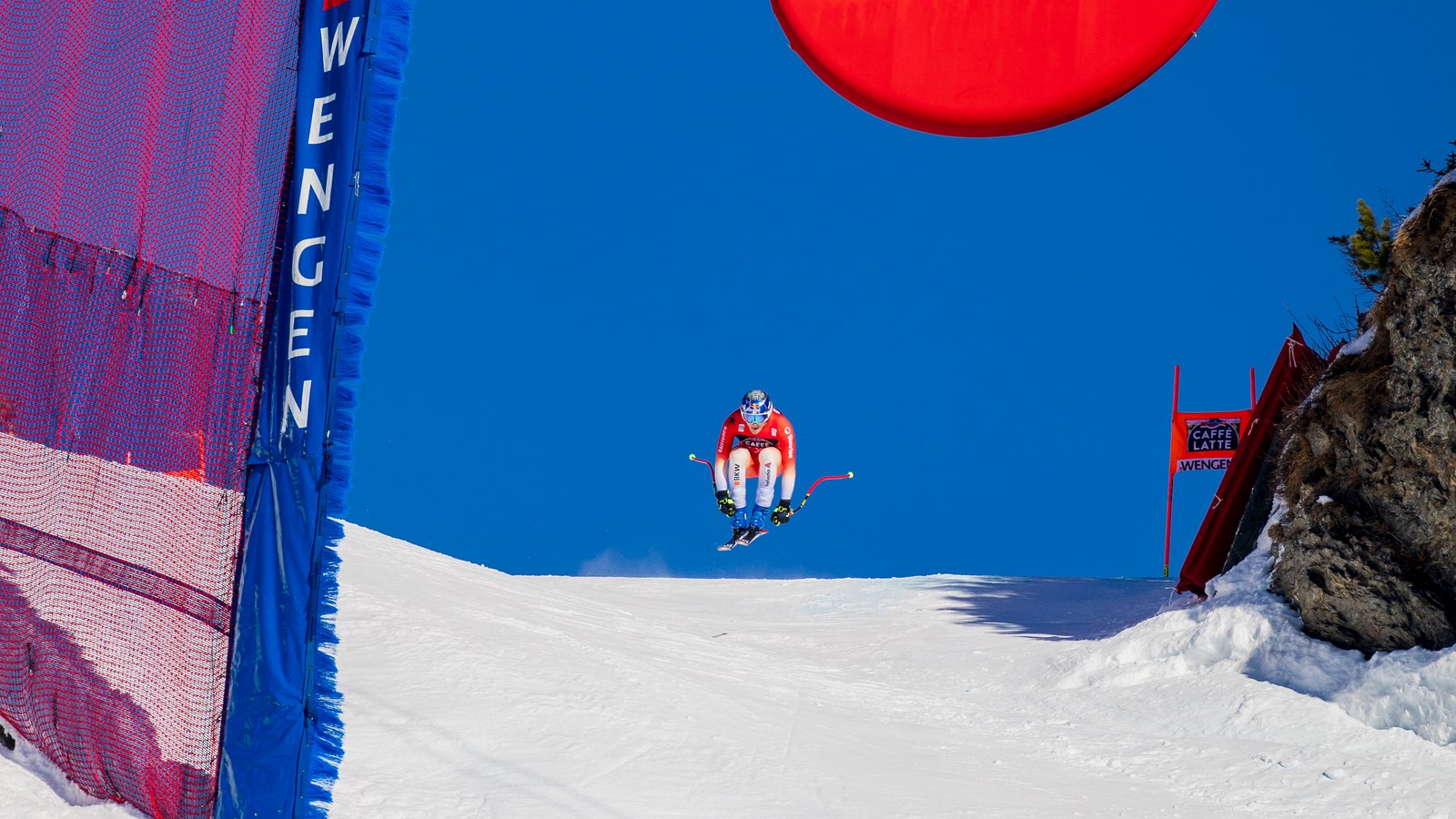So, is it “Hunds-chopf” or “Hund-schopf”? Well, the former could be explained by the fact that the Hundschopf does actually resemble a dog’s head (the “Chopf” of a “Hund”). If we go with the latter, the explanation could lie in the fact that “Schopf” is another word for “fur”, and so “Hundschopf” refers to the fur on a dog’s head. However, as confirmed by one Wengen resident, born and bred in the village, “Schopf” is also the traditional Wengen term for “stone”. And what do you get when a stone in Wengen looks like a dog? A “Hund-Schopf”, of course. So there you have it!
But what exactly is the Hundschopf? Imagine it’s winter and you’re standing at the start of the iconic Lauberhorn downhill run at 2,315 metres above sea level, skis strapped on, ready to go. You take a deep breath and then push off with three or four powerful thrusts of your poles. The first key section is the Russisprung. You master this with ease. Then comes the Traversenschuss, where you accelerate from 100 to 130 kilometres per hour in just five seconds. Quick question: Have you ever stuck your head out of the window while in the car on the motorway? Give it a try (as long as you’re not the one at the wheel) and you’ll get a rough idea of what this speed feels like for a downhill skier.
Now you come to a long right-hand bend, only to immediately turn into a left-hand bend, which fortunately slows you down before you head for the spectacular, unique and steepest section of the Lauberhorn downhill run at 41 degrees – the infamous Hundschopf! This is where we start to see the wheat getting separated from the chaff. If you’re brave and willing to take risks, you’ll head straight for it. Otherwise, you might want to think about taking an extra swing here (or stopping completely). I wouldn’t blame you; after all, the distance between the rock on the left and the safety net on the right is a paltry five (!) metres at most. Basically, this is a steep, narrow section that demands respect. But what can you do when the first rule of a downhill race is to get from start to finish as quickly as possible? That’s how it is today, and that’s how it was almost a hundred years ago when downhill skier Ernst Gertsch founded the Lauberhorn races in 1930. There were no lines or gates back then. The faster skier was the one who was quicker to make it down the mountain, and the fastest way down was via the Hundschopf. That won’t do for the FIS, of course, but it’s wonderful to see that the Hundschopf has retained its decidedly unconventional edge.
So you close your eyes, take off exactly from the edge between the rock and the safety net and fly out into the abyss – for a good 40 metres. Thankfully, the teams constructing today’s pistes do everything they can to ensure that you not only get a decent amount of lift, but also land safely. Speaking of safety: if the approach to the Hundschopf were to be set up today as it was 20 years ago, the athletes – those powerhouses who seem to have rockets strapped to their feet – would come hurtling in far too fast. That’s why an artificial ramp was built about ten metres before the actual jump to ensure an optimal take-off for the skiers, and the trajectory was thus extended to around 40 metres. That’s as far as four ten-metre diving platforms laid end to end – so pretty far.
The Hundschopf may be old school, which is why some of the skiers affectionately call it “Jurassic Park”, in reference to the timeless Hollywood blockbuster from 1993. But I ask you: What would Jurassic Park be without dinosaurs? What would the Lauberhorn be without the Hundschopf, or the Hundschopf without the Lauberhorn, for that matter? Don’t say it too loud, but probably not much more than a rock that looks a bit like a dog’s head.
Text: Doris Büchel, author, Liechtenstein

